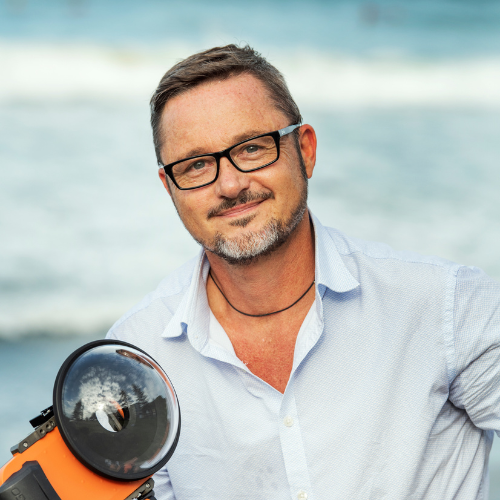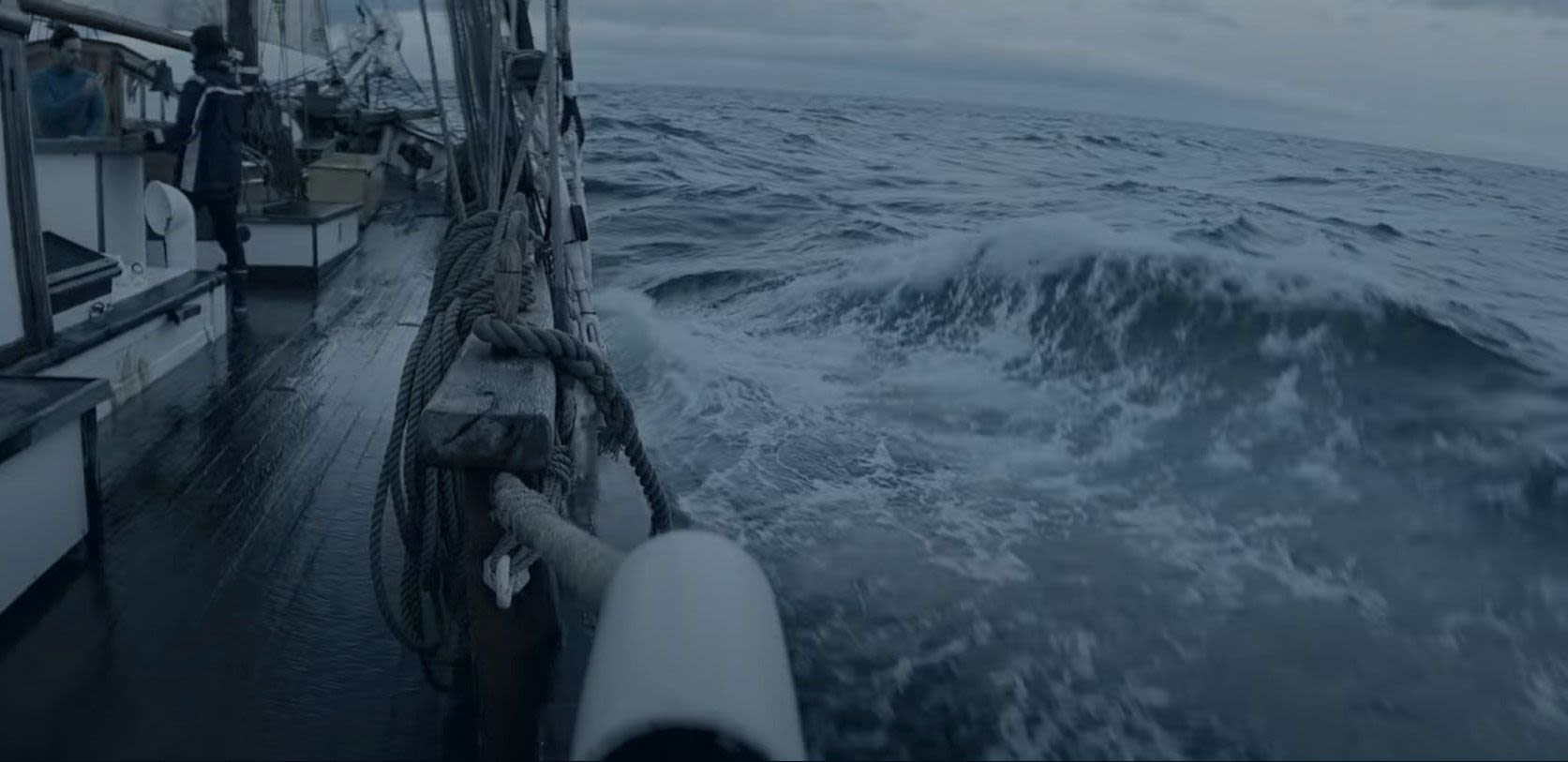
In 2023, Assistant Professor Rob Layton used an iPhone to film and produce a documentary about a scientific expedition around Iceland as part of his PhD project into mobile journalism. This is his account of the adventure.
A scientific expedition aboard a traditional square-rig schooner around Iceland, in the company of mission scientists and fellow creatives, was a once-in-a-lifetime opportunity. Ahead of us lay 900km of outstanding natural beauty, poignant wildlife encounters, bad weather, a camaraderie forged of these challenging yet wonderfully shared experiences, and the chance to be part of a cause larger than myself.
8 days
spent at sea
897km
ocean sailed
542gb
video recorded
150hrs
editing time
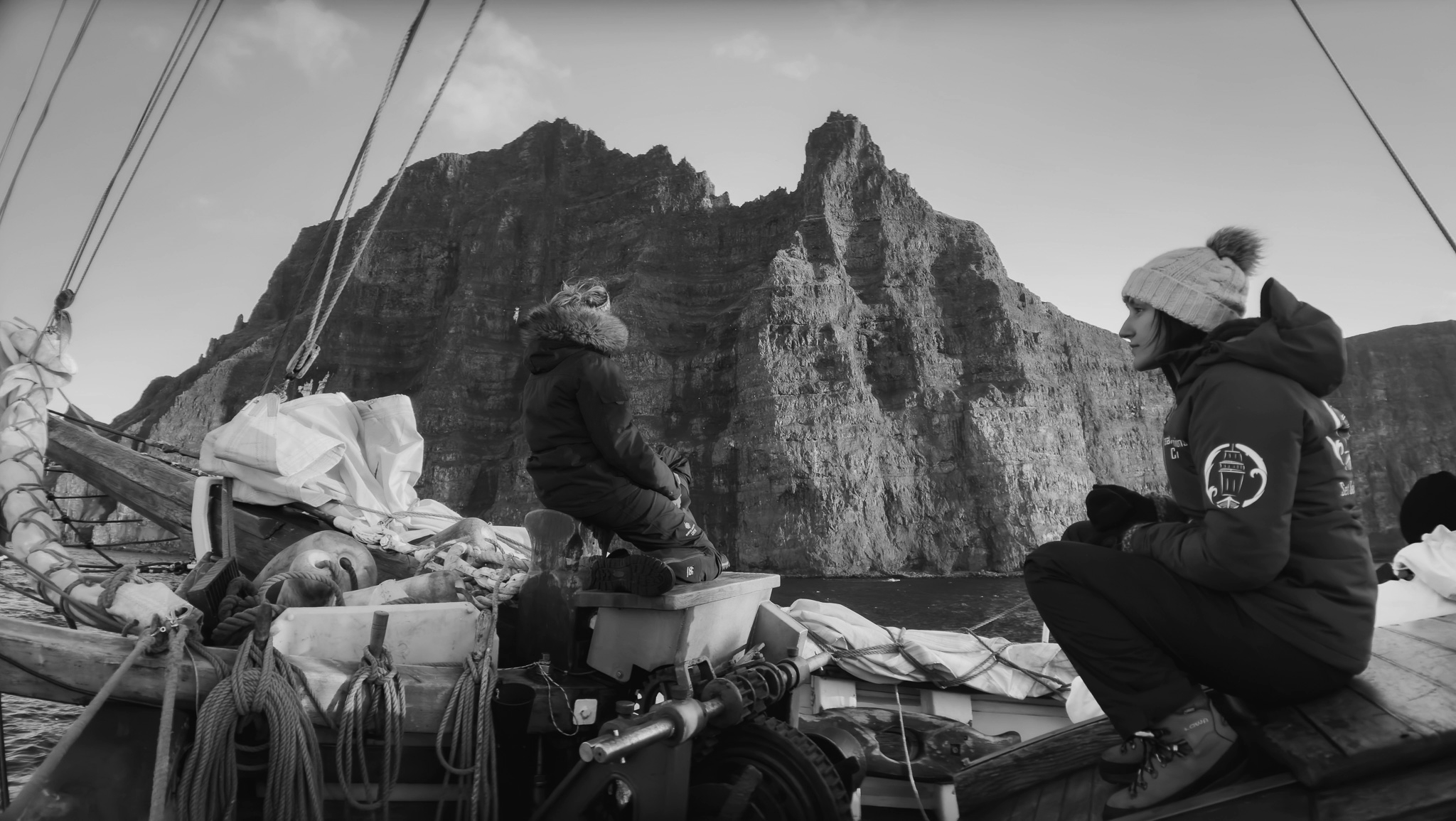
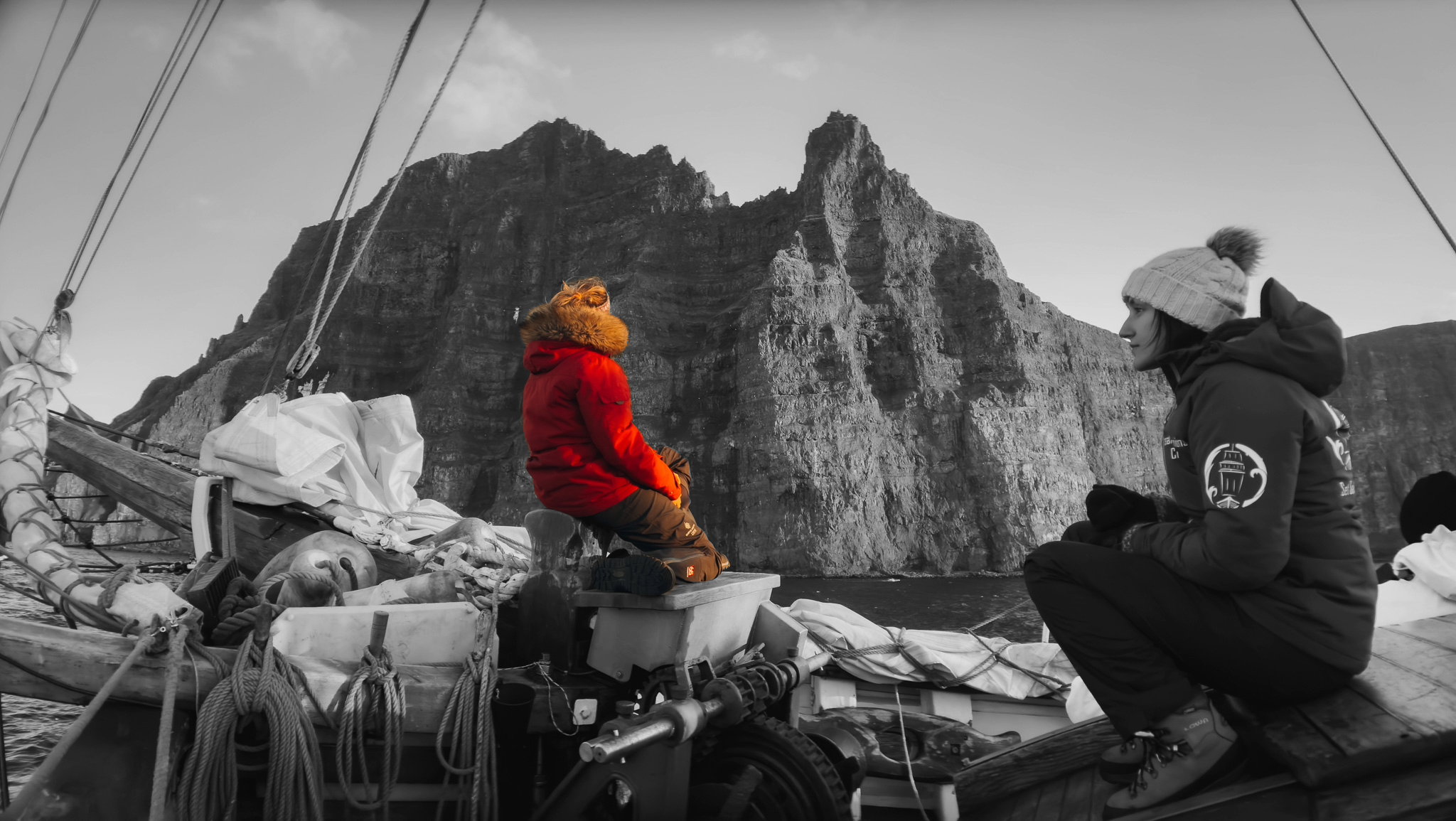

A new hope spot
For me, it began with a series of online conversations with Ocean Missions founder and lead scientist Belen Garcia Ovide, a Spanish marine biologist who moved to Husavik in Iceland’s north to devote herself to studying and protecting that region’s diverse yet fragile marine environment. I was looking for an ocean-orientated experience that would supplement my PhD work, which involves documenting ocean communities.
She told me that in the four years since its inception, Ocean Missions had conducted numerous beach clean-ups that recorded and cleared more than 14 tonnes of debris from remote Icelandic beaches. Most of it comprised plastics/polystyrene, including fishing nets and ropes, buoys, bottles, bags and shotgun cartridges (most likely from bird hunting). She said Ocean Missions is also the first organisation to gather data on microplastic surface pollution in Icelandic waters.
That hard work and devotion was rewarded in June this year when renowned oceanographer Sylvia Earle’s organisation Mission Blue officially recognised north-east Iceland as a Hope Spot. It was at New York’s prestigious Explorer’s Club that Belen and fellow OM scientist Dr Charla Basran presented their work to Dr Earle and the committee (Hope Spots are ecologically unique and significant marine areas that Mission Blue identifies and designates as deserving special attention and protection).
Belen’s passion and belief in the mission compelled me to travel 16,000km from Australia to film a documentary about the work.
The romance begins
The week-long expedition around Iceland’s stunning Westfjords en route to Husavik began with a midnight departure from Reykjavik. My taxi driver drove slowly along the harbour wharf, searching for the boat.
“Which one is it?” he asked.
We rounded a building, and Opal’s schooner masts, rigging, and yardarms came into view. The square-rig tall ship, itself a symbol of exploration and adventure, contrasted elegantly against the drab industrial fishing vessels surrounding it and Reykjavik’s urban skyline. On board were nine strangers from around the globe — photographers, vloggers, a children’s book illustrator, and visiting scientists — alongside the Ocean Missions crew: captain Heimir and mate Husky, Belen, and whale expert Charla.
As we left Reykjavik, the mission scientists seized the opportunity to collect data in the bay, subjecting us to three hours of uneven swells that left the unseasoned passengers horribly seasick. By 3am, most of us went to our bunks to awake the next morning to a 40-knot gale, rough seas, and freezing rain that stung our cheeks. The romance wasn’t exactly over, but it certainly reminded us that this was a scientific endeavour and not a pleasure cruise.
The next seven days were sporadically more gales and storms, calm seas, mist and rainbows, and a lot in between as we collected microplastics surface data and conducted three beach clean-ups. An unseasonal late-winter storm towards the end of the expedition lashed Opal with 50+ knot winds that approached hurricane levels and tore Ocean Mission’s manta trawl — the device used for gathering surface plastics data — from its tether and washed it overboard. Its loss effectively ended the expedition’s mission work (watch the film for an account of the incident), highlighting the setbacks, hardships and extreme conditions the Ocean Mission’s team often endure.
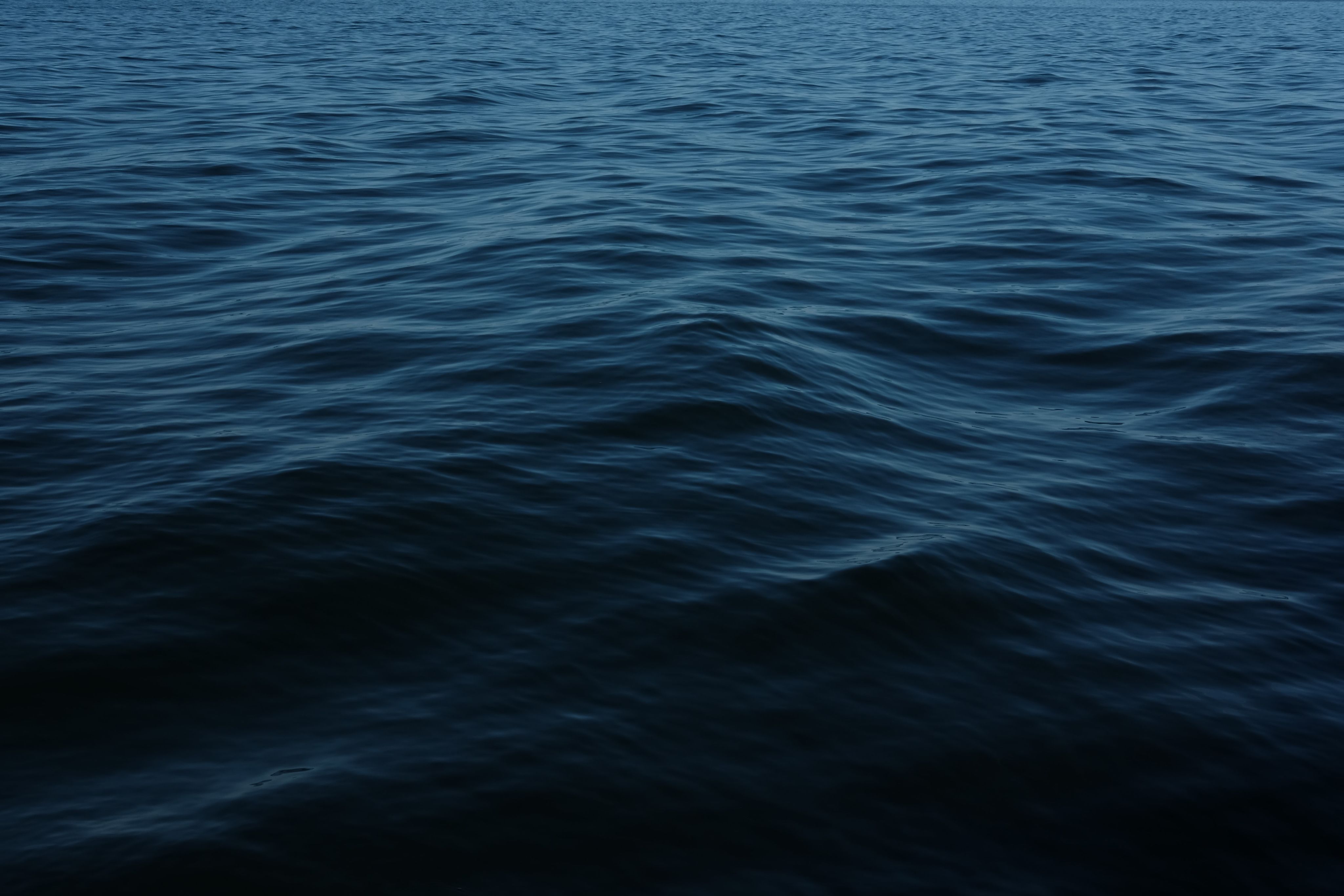
Sustainable tourism
Opal is the flagship of North Sailing, the fleet founded and run by three generations of one family by which Heimir Harðarson — our captain on this expedition — is the latest generation (Heimir’s 16-year-old son is learning the business). It began in the 1980s when Heimir’s grandfather saved an old timber fishing boat from dereliction, restored it to its former glory, and then started on another. And then another. Soon, he had a fleet of traditional Icelandic oak boats and thus was born Iceland’s first whale watching business. Husavik’s harbour opens onto Skjálfandi Bay, a nutrient-rich feeding ground, providing close access to humpbacks, orcas, blue whales, minke, sperm, dolphins and a host of other marine animals.
Despite (or because of) the hundreds of summer tourists that nowadays throng Husavik’s harbour front and cram the gunwales of fleet boats in search of whales, North Sailing maintains an ethical approach to its business. Two of the fleet of 11 vessels are hybrid diesel/electric (one of them Opal), and the company has won numerous awards for sustainable tourism, including as a Certified Responsible Whale Watching Operator by the World Cetacean Alliance. Iceland has no legal protection for whales (commercial whaling resumed this month) or regulations on their welfare, so North Sailing works to its own strict environmental policy and code of conduct.

“We explored remote locations that few people have seen, engaged in whale painting workshops interrupted by the appearance of humpback whales and shared stories.””
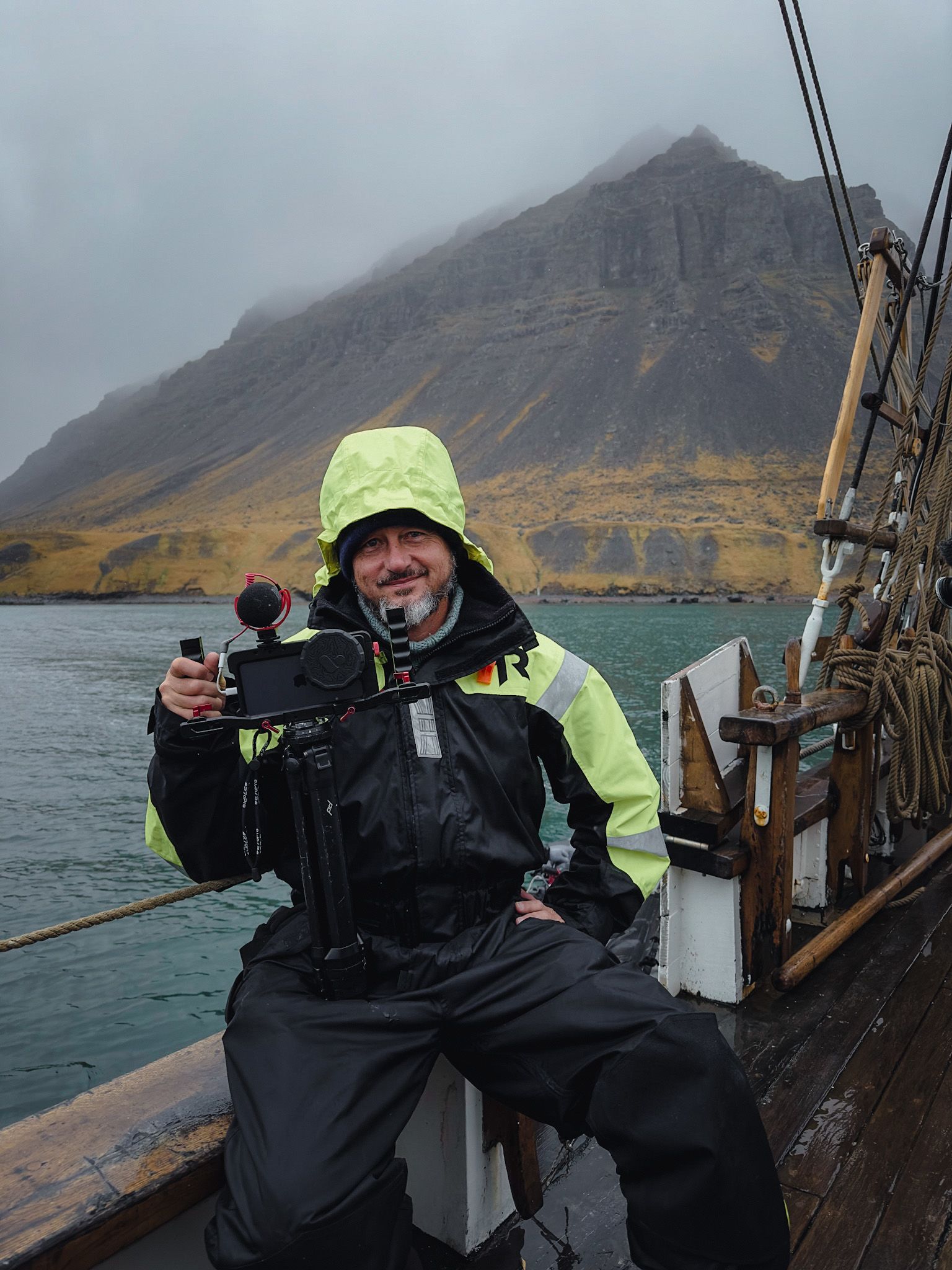
Ocean conservation through education
Research and education are pillars of North Sailing’s commitment to ocean conservation. They support scientists from the University of Iceland, and Belen introduced the concept of citizen-assisted science to day tours out of Husavik, in which passengers can help her conduct microplastics research. School excursions are also popular.
Citizen-assisted science is the framework in which North Sailing and Ocean Missions collaborate to deepen research and advocacy. Ocean Missions conducts a handful of expeditions each year, where guests pay up to €1,900 ($3,140 AUD) for seven nights on Opal and the adventure of travelling to remote areas to clean and gather data. This covers the basic operations of the boat while some of the funding goes to running the NGO, and the rest goes to developing education programs with schools and local communities.
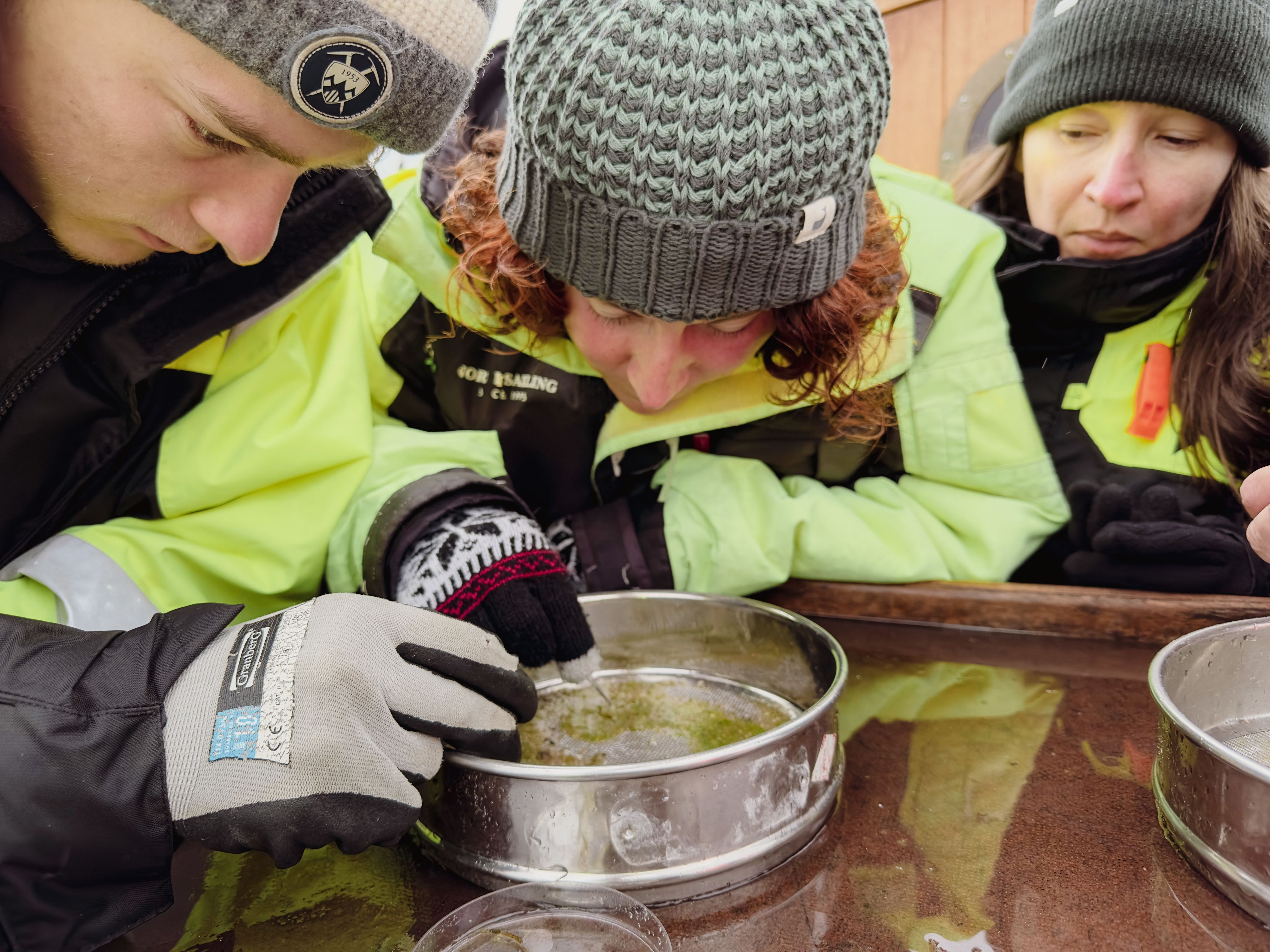
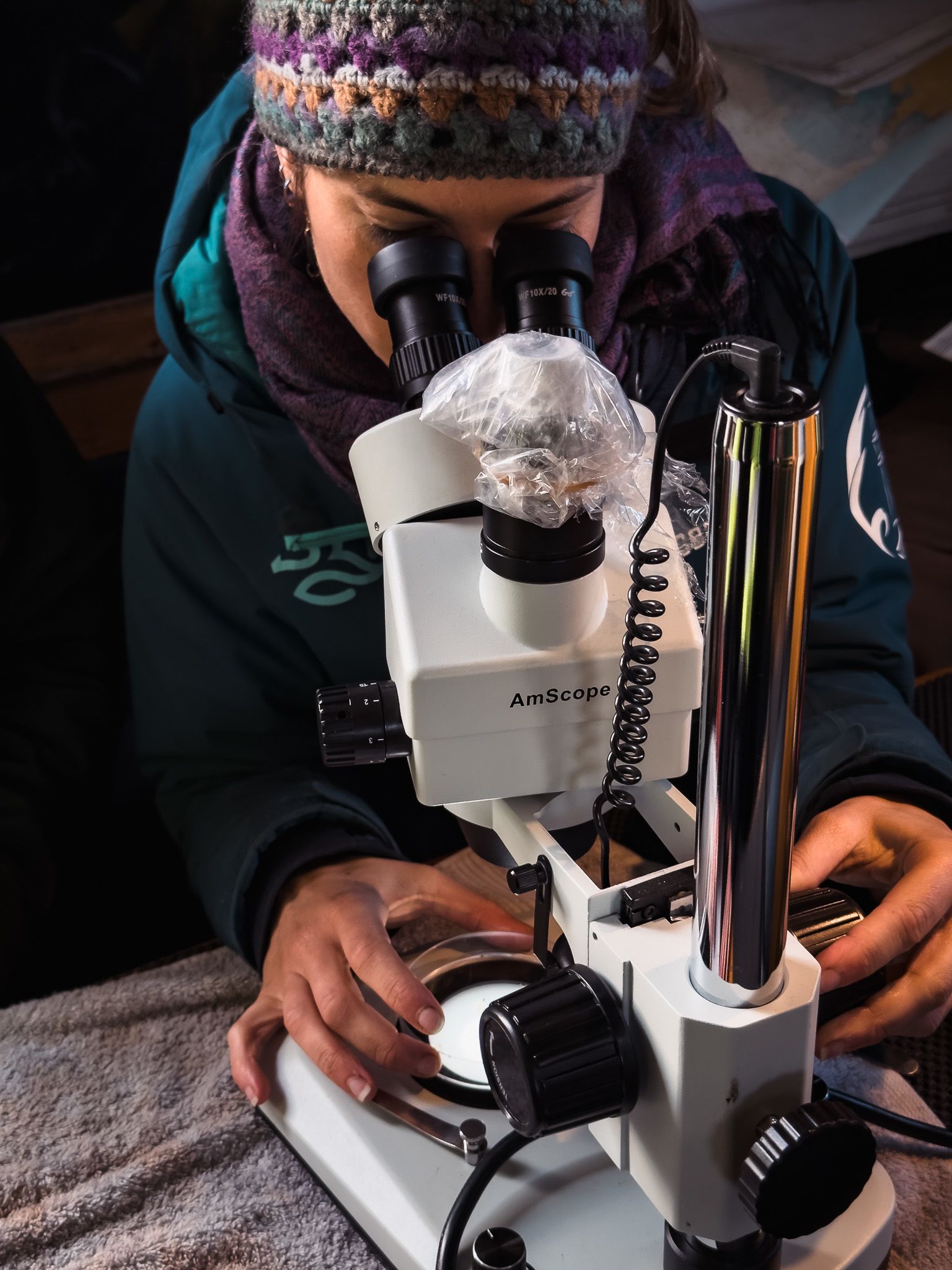
Although our introduction to the science was challenging – at midnight amid wallowing waves — everyone in the group was keen to get involved. Throughout the expedition, Belen and Charla explained the tasks at hand, how they were to be conducted, what was expected of us, and our duties. It was incredibly satisfying work.
Remote beach clean-ups
Although we had already participated in beach cleans in villages where we waited out bad weather, it was an isolated beach in the Westfjords that was most fulfilling. Opal berthed in Bilduladur, a small fishing village on the coast of Arnarfjörður, a pristine and deep fjord of awe-inspiring natural beauty.
Due to the abundance of fish farms here, Belen and Charla were keen to sample the sea surface for plastic particles. They suspected significant microplastic pollution, which can be a problem when krill and other small animals eat the plastics that then make their way up the food chain, resulting in larger animals feeling satiated, stopping eating, and starving to death.
Bilduladur, like many coastal villages in the region, is quiet and clearly reliant on fishing to survive. The first thing I noticed when Opal docked was the new and expansive concrete wharves, piles of fish farm equipment and supporting infrastructure, and Norwegian fishing vessels. The farms here are operated by Icelandic Arnalax and Arctic Fish, which are majority owned by Norwegian companies.
Walking through the village, I was drawn to the Sea Monster Museum. The manager there told me that just a few years ago, the village was dying, with fewer than 70 residents. Since Norwegian investment, the village has prospered and more than 300 people now call Bilduladur home. It was a common story among the villages I visited and residents I spoke to on my further travels through Iceland.
Belen made the point that she was not necessarily against the fish farms but that they should be more ethically managed, with more rigorous governmental oversight. News reports about them often are negative.
Surface data gathered around the farms on this expedition yielded little micro-pollutants. Yet when we went deeper into the fjord for a remote beach clean, it was a different story.
As we came ashore from Opal, I could not keep my eyes from the rocky pinnacles of mountain before us. Mist shrouded the tops and crept into the crevices. It was surreal and mystical, and I began to appreciate how Viking myths and legends were made, half expecting a troll to emerge and begin hurling rocks from the clifftops. Then my gaze drifted down, across the grassed dunes to the shiny, smooth black stones of the shoreline, to fall on a matted mess of discarded fishing net half buried in the sand.
Belen and Charla marked out their 100-metre survey lines, and the team extended to the full width of the beach. We picked up and bagged all the rubbish we could see, to be later weighed and sorted into standardised categories — plastic bottles, fishing gear, buoys, etc — following the internationally accepted OSPAR protocol.

Once the scientific measurement was done, we spent the next few hours cleaning the rest of the beach. The team collected about 400kg, comprising lots of old nets, pieces of plastic tubes and trays, and hard buoys from the farms. It was placed in the zodiac and returned to Opal for sorting in Husavik, where Ocean Missions hoped to partner with a local business that would recycle the waste.
As I hauled a pile of netting along the beach a local landowner, Ari, came over the dunes to greet me. He told me he does his own annual clean of the beach, and was grateful for our efforts. I brought him to meet the rest of the team, where he was quick to voice his abject opposition to the farms for the reasons we were cleaning up. It was apparent local communities were deeply divided over the farms. To some, the farms mean a viable living. To others, they are a blight on the environment.

Bonds formed at sea
Despite the challenges, there were many moments of joy and deep camaraderie. We explored remote locations that few people have ever seen, engaged in whale painting workshops interrupted by the appearance of humpback whales, and shared stories. Our diversity had become our strength, connected through common goals.
Approaching Husavik, the boat had become a second home. I was at ease, comfortable with its nature, attuned to its idiosyncrasies. I was grateful to Heimir and Husky for having faith in me to assign minor crew duties.
We anchored behind a small island, took in the beauty of the midnight landscape, the full moon rising above snow-capped peaks, and savoured our last moments on the ship in this splendidly pure environment.
The takeaway
The scientific expedition was more than an adventure, more than merely data collection. Each of us took with us a story of inspiration and collaboration to share with our part of the world.
It was about inspiring spirits and the value of starting local, how a single person can make a difference, and how individual passion and ambition shared at a local level can ripple and flow to other individuals and other local communities. Each action, no matter how small, has meaning.
The expedition was just a few months ago, but now that I have had time to reflect, I realise the importance of small collective actions. And that those actions can have a lasting impact on the world around us and help guide us towards a hopeful future.
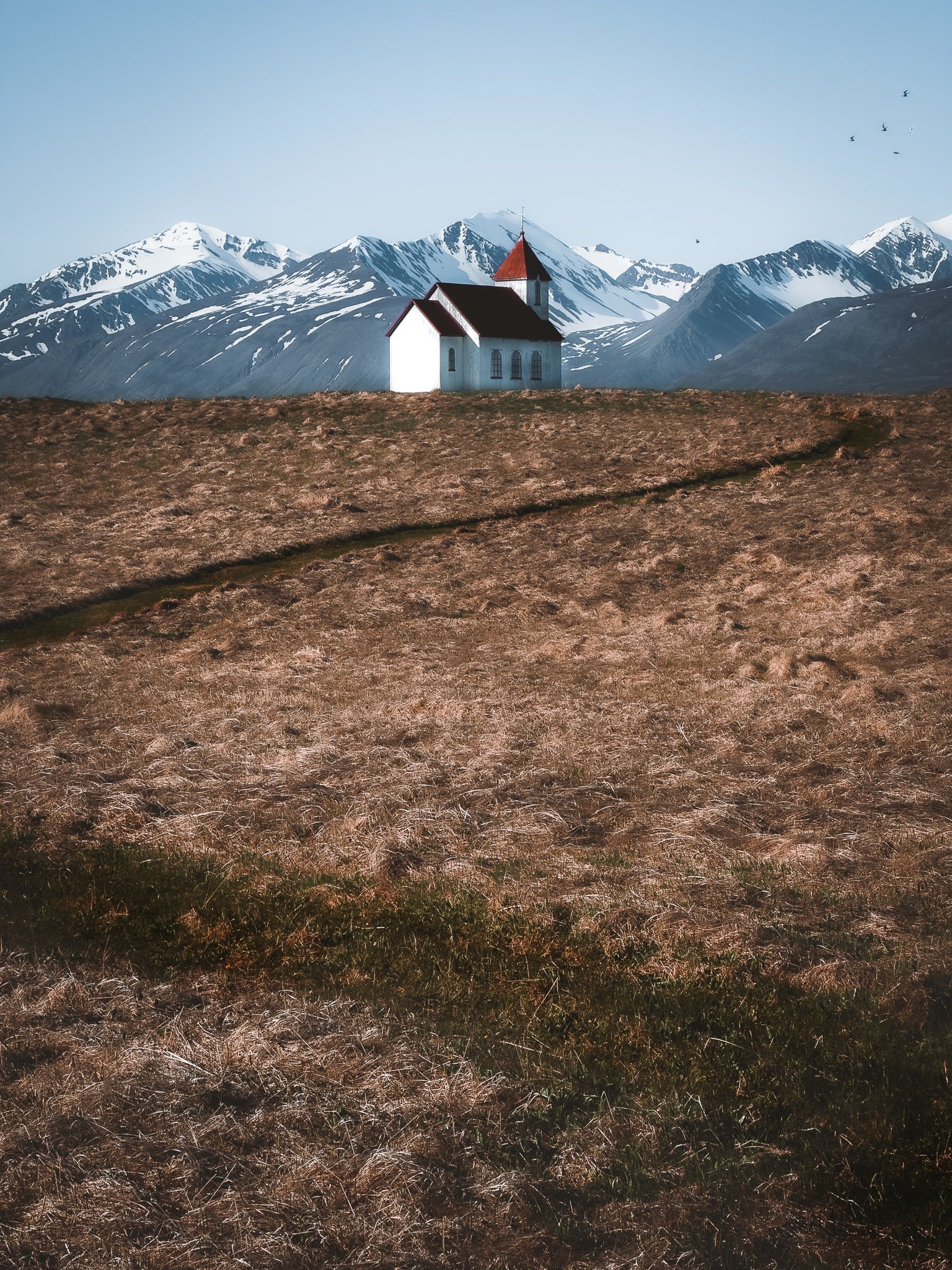
Original thinking direct to your inbox

Stories from Bond
